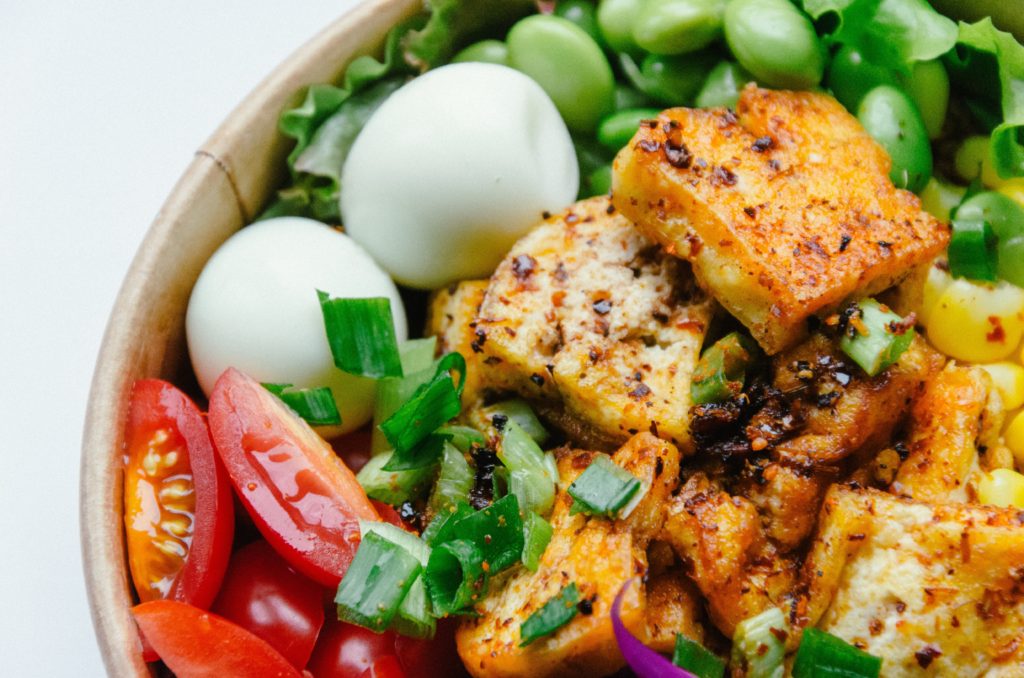7 Simple Tips To Make Your Fat Loss Diet Easier to Stick To

Sleep More and Sleep Better
A lack of sleep throws your two primary hunger hormones off balance—ghrelin and leptin.
Leptin is a hormone that signals to your brain that you have enough food and don’t need to eat.
Ghrelin is produced in your stomach and secreted when food is low. It enters the bloodstream and affects the hypothalamus of the brain, which then stimulates your appetite and increases hunger.
Sleep deprivation causes leptin levels to drop, and ghrelin levels to rise. When this happens, you’ll experience an increase in hunger, appetite, and sometimes cravings as well.
If you’re low on energy, hungrier, and craving sweet, high-fat, calorie-dense foods, it’s going to be much more challenging to make food choices that’ll help you reach your fat loss goals.
If you’re sleep deprived and low on energy, you’ll probably be less active throughout the day. You might not push yourself as hard in the gym, or might even skip your workout. Getting enough sleep will help you stay more active throughout the day, which is an important lifestyle change to make to not only lose weight, but then keep it off.
Aim for 7-9 hours of sleep each night. Waking up 1-2 times per night and falling back to sleep in 30 minutes or less is considered quality sleep. So, if you’re waking up more than twice throughout the night and you’re having a hard time falling asleep, try to identify the cause and do your best to fix it.
How to Sleep Better: 15 Tips for Quality and Restorative Sleep
Keep Your Protein Intake High
Protein often keeps you full for longer compared to most carbs and fats. If you’re full for longer between meals, you might end up eating less meals throughout the day, and maybe even less food at each meal. This will make staying in a calorie deficit easier.
Not only that, but it helps you hold onto muscle mass as you lose weight. Maintaining the muscle you do have, or even gaining muscle, is important while losing fat. Retaining as much muscle as possible will help keep your metabolic rate higher.
A drop in metabolic rate means you no longer burn as many calories at rest. The lower your metabolic rate drops, the further you’ll need to lower calories to continue to lose weight, or you’ll need to burn more calories through more physical activity, or a bit of both. Having to lower your calories more and more will make it more difficult to sustain a calorie deficit that’s needed to lose fat. Combine a sufficient protein intake with progressive strength training, and you’ll reduce the risk of muscle loss.
Aim for 0.7-1 gram of protein per pound of body weight.
If you’re roughly 20% body fat or more, aim for 0.7-1 gram of protein per pound of either your lean body mass, or your goal body weight. Many people don’t know their lean body mass, so they often use goal body weight.
If you’re very lean, less than 10% for men and 18% for women, going beyond 1 gram per pound of body weight could potentially help you prevent muscle loss since the leaner you get, the greater the risk of losing muscle.
Some great high-protein foods include chicken breast, lean cuts of red meat, turkey, fish, shrimp, eggs, egg whites, yogurt, cottage cheese, and whey protein,
Eat More Fruits & Vegetables
No, the sugar from fruit, or the sugar from peas, carrots, and corn won’t make you fat. No single food or ingredient makes you gain weight on it’s own. You gain weight from being in a calorie surplus for an extended period of time.
Fruits and vegetables contain a decent amount of both fiber and water. These both contribute to making you feel full for longer, making it easier to stay in a calorie deficit.
Most fruits and vegetables are high-volume, nutrient-rich foods that contain less calories than many other foods. This means they take up a lot of room on your plate, and in your stomach, don’t have very many calories, but do carry a bunch of nutrients.
Combining protein and vegetables for the majority of your meals is a great way to stay satiated and provide your body with a variety of nutrients.
Increase Your Fiber Intake
Most fruits and vegetables contain a good amount of fiber, but so do oats, chickpeas, whole wheat pasta, brown rice, lentils, beans, avocados, potatoes with the skin, and some whole grain breads and cereals.
Many high-fiber foods are also high-volume foods, like fruits and vegetables.
High fiber foods also expand more when combined with liquids. So when you drink water while, before, or after eating foods high in fiber, it will expand to take up more room in your stomach, helping you to feel fuller.
Fiber also slows down gastric emptying, this also contributes to helping you feel full for longer. If you can stay full for longer, staying in a calorie deficit is less challenging.
A meal containing a protein source, vegetables, and a great source of fiber like brown rice, lentils, or beans can help you stay full while fueling your body well.
Eat More High-Volume, Low Calorie Meals
Eight ounces of chicken breast, 1 cup of spinach, and 1 cup of blueberries only has about 325 calories, and takes up a good amount of room on your plate. It’s loaded with protein, it has a decent amount of fiber, and is a high-volume, low-calorie meal.
Your typical whole wheat bagel with 32 grams of peanut butter is roughly 430 calories, and can fit in the palm of your hand.
See the difference?
The chicken breast, spinach, and blueberries will take up far more room on your plate and leave you more full.
A bagel with peanut butter takes up very little room, will be quicker to eat, and won’t be that filling. It’s a higher calorie meal that’s lower in volume. A whole wheat bagel will have a decent amount of fiber though. The fats in peanut butter can keep you full for a while.
However, the higher volume meal of chicken breast, spinach, and blueberries that has less calories will likely be more filling, and it’ll take longer to eat. Simply taking longer to finish a meal can make it easier to hold off until your next meal.
This doesn’t mean never eat calorie-dense meals, but choose them wisely and make sure you still hit your calorie goal.
Play Around With Meal Frequency
Some people are more satisfied and find it easier to consistently be in a calorie deficit with less frequent, but larger meals.
Others do better with more frequent, but smaller meals.
Or maybe 3 larger meals, and 1-2 small snacks.
Find what works best for you.
There’s no difference in regards to weight loss between eating 3 meals or 6 meals, or anywhere in between.
What matters most is the amount of calories you consume at the end of the day.
Your meal frequency and size may change as you and your schedule changes. Don’t be afraid to experiment and find what meal frequency allows you to stick with your diet.
Stay Hydrated
Trying to lose weight or not, staying hydrated is something we should all be doing all of the time. It’s not only good for you, but it helps you stay full for longer between meals, which can prevent you from eating too much.
Also, many people mistake thirst for hunger. They’re eating when they should be drinking water. The same part of your brain is responsible for interpreting both hunger and thirst signals. If you feel hungry, try drinking a couple glasses of water, wait 15-20 minutes, and then see if you’re still hungry.
I know I’ve definitely had times where I thought I was still hungry after finishing a meal. I drank a couple glasses of water, was quite full afterwards, and held off for another few hours for my next meal.
Aim for half your body weight in ounces, plus fifteen ounces for every hour of exercise. Don’t wait until you’re thirsty to grab some water. Make it a habit it keep a water bottle or glass of water nearby at all times.
